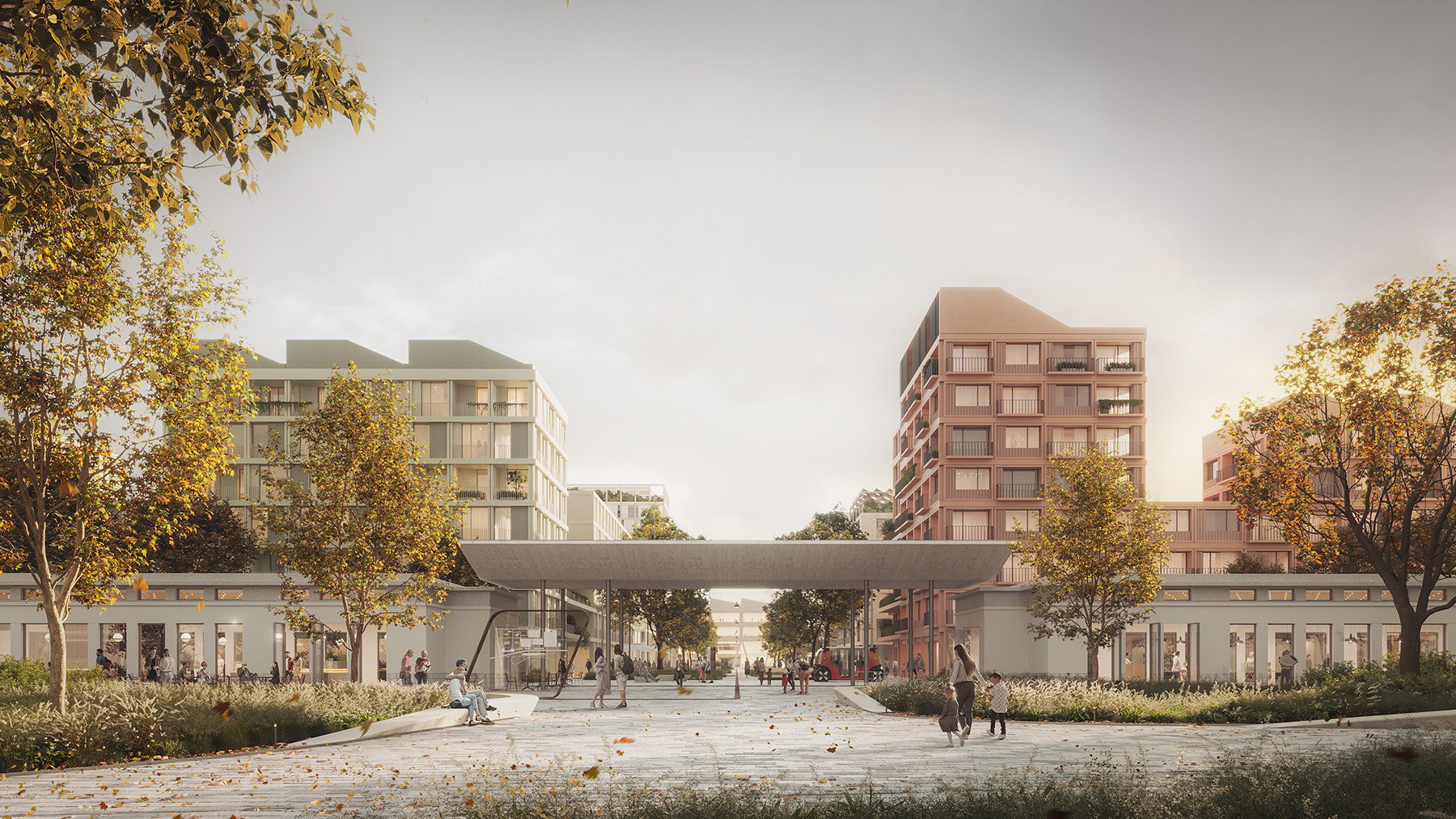
By David Jen
A unique opportunity to develop 62 ha in Warsaw, Poland, has presented itself in the form of the now-defunct Fabryka Samochodów Osobowych car factory.
Polish architectural design studio WXCA revealed in January a master plan to build a “green district of the future” on the site that will house some 17,000 residents and employ about 13,000 workers by 2050, according to a WXCA statement.
“This project poses a unique challenge as it puts before us the question of what should cities look like and how should they function in the coming decades,” says WXCA architect Małgorzata Dembowska in press material. “After all, what is modern today may be outdated in 10 years’ time, which is why timeless values are at the very heart of the project, focused on the needs of individuals and the identity of the place.”

WXCA collaborated with urban design studio SAWAWA, Buro Happold, JKO Consulting, and the Warsaw City Council. OKAM is the investor.
A linear park more than 1 km long will serve as the main axis of the district. Spanning 10 ha, the park will offer green spaces with varying profiles, silhouettes, and naturalization levels to smooth the transitions into the green interior courtyards of the rest of the district, according to WXCA.
The master plan also sets aside 3.5 ha for a school campus that will include spaces for sports and leisure.
Pedestrians and cyclists will have priority over vehicular traffic, which will be routed along a perimeter road into parts of the city. Residents will find their basic, everyday needs within a 15-minute walk of their homes.
“The overriding challenge that we set (for) ourselves was to design a space facilitating the forging of a community and social ties within it,” said WXCA CEO Marta Sękulska-Wrońska at the project’s presentation conference. “At WXCA, following (the example of) Professor Jan Gehl, we believe that a city starts between buildings.”
Jan Gehl, founding partner of Gehl Architects, is known for observing people and using that information as the beginning point of his designs, envisioning the kind of public life that will be required of that space.
Other carbon-reduction measures in the Warsaw district will include a “100% groundwater-retention system, power-generation system, and energy-sharing system between buildings,” designed in collaboration with engineers from Buro Happold, according to WXCA.

FSO produced some 4 million cars and employed tens of thousands of people when it was in operation during the 20th century. It served as a “symbol of the Polish automotive industry,” according to WXCA, and the new district’s designers paid special care to preserve this heritage.
Some relics of the factory will be given new lives in the redesign. Parts of the assembly and casting shops as well as the walkway of the former welding shop will be preserved in the structures surrounding the district’s main square. The modern architecture of the new buildings will also acknowledge the existing industrial buildings through forms such as saw-tooth roofs.
“The presently degraded land covered by sheet metal and concrete will be transformed into a living space abounding in greenery, very befitting of a modern, forward-looking metropolis,” writes WXCA.
Construction begins in 2026.
David Jen is a freelance science journalist based in the San Francisco Bay Area.
This article first appeared in the May/June 2024 issue of Civil Engineering as “Factory Transformation.”



